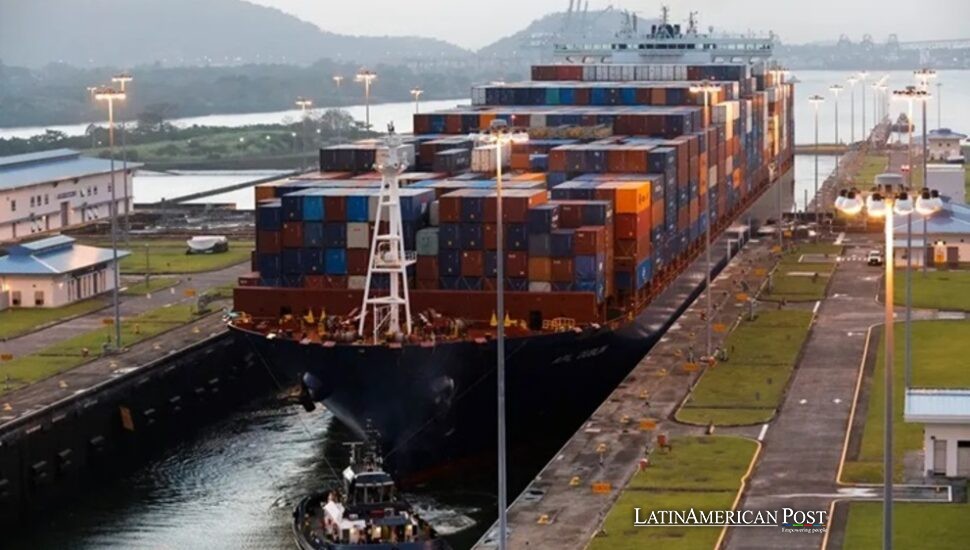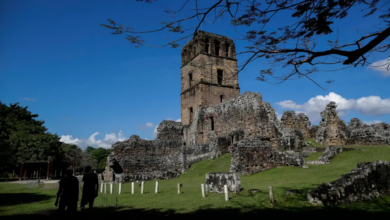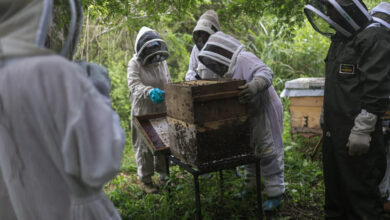Panama Accord Sparks Debate on Expanded U.S. Presence

Panama and the United States have a new security agreement. It formed because Washington wanted to control the historic interoceanic canal again. Many people feel worried because of this. Certain citizens fear past military occupations. Some officials support the arrangement.
Historical Ties and Recent Developments
In December 1989, American troops entered Panama. They mentioned reasons to safeguard the American people, combat the drug trade, and uphold the Panama Canal’s neutrality. This situation gave many Panamanians bad memories. They remember the long period of American military presence. It affected the country’s social and political structure.
Although this period officially concluded in 1999, when the canal’s control relocated, the impact of external participation persisted in the national mindset. As a result, the declaration of a novel bilateral security pact raised concerns about sovereignty and independence. Panamanian officials refer to it as a “memorandum of understanding” that remains temporary and can be terminated at will. They have stressed that no part of the agreement infringes on the 1977 Torrijos-Carter Treaties, which guaranteed the handover of the canal and the dissolution of U.S. bases in the former Canal Zone. Still, the document’s secrecy has fueled speculation about its proper scope.
Comments by high-ranking U.S. figures, where they mentioned a plan to “recover” or “protect” the canal, made the situation in Panama more strained. The waterway across the isthmus means much to the world’s commerce; however, it also forms a center for the people and selfhood of Panama. Because the nation ended its military in 1990 and only has police to defend it, a return of outside soldiers worries many people. This concern stems from the thought that Panama’s freedom could face danger.
Statements from U.S. Secretary of Defense Pete Hegseth, made during his visit to Panama, have done little to quell anxieties. He drew attention to alleged Chinese influence in the canal, suggesting that bolstering American troop rotation is part of a broader plan to counter foreign interests. While U.S. officials frame these moves as cooperative training and readiness exercises, some Panamanians interpret them as a potential prelude to re-establishing a permanent military foothold.
Government Defense and Public Concerns
Panama’s Foreign Ministry says the recent agreement does not give away control or violate the canal’s neutral state. Government statements show the memorandum permits shared training projects and security actions that match current treaties. Officials underline that it continues cooperative exercises done for 18 years. Each Panamanian government cooperated on security with the United States.
Some resistance developed inside the nation. Critics doubt the pact’s need and specifics. They argue that while the text remains secret, transparency is impossible. They voice fears that the arrangement could open the door to a permanent U.S. military base—especially as references to Fort Sherman, Naval Station Rodman, and Howard Air Force Base (sites once occupied by U.S. forces) have reappeared in official statements.
After President Donald Trump declared that “many troops” moved into Panama and reclaimed zones Washington no longer controlled, the controversy increased. Secretary Hegseth’s remarks made some people think that this teamwork surpassed ordinary exercises. People asked questions when they learned that about 1,000 U.S. soldiers are helping Panamanian forces now. However, the Panamanian government denies that foreign troops can operate without restrictions or build lasting facilities. It insists that this agreement is only for brief teamwork.
Few protests happened. Activists, besides groups, requested a total release of the memorandum details. Due to the secrecy around the document, they felt some clauses permit military outposts to reopen. The label of “rotational deployments” would still apply. These demonstrations indicated concerns. A strong nation might tell Panama how to manage its defense. Panama’s ability to govern itself might diminish.
Besides security experts, business leaders have closer ties with the United States. They mention continuous worries about drug trafficking and organized crime next to risks to maritime infrastructure. They see the bilateral accord as a strategic partnership. It gives Panama assets and training next to technology. For those in support, practical security is more important than national pride. Panama lacks a regular army, and because of that, the nation relies extensively on global support. This backing protects its frontiers besides essential assets.
The Path Forward: Balancing Sovereignty and Security
A key issue for many Panamanians centers on addressing authentic security necessities and protecting their independence as a nation. The canal holds significant worth for their economy. It embodies the finish of an extended struggle to achieve freedom from foreign influence. Should any understanding suggest a return to overseas governance, it generates concern.
Government officials say the memorandum will become available to the public shortly. Only a few details are known. This paper seems to permit joint military exercises, data transfer, and access to specific areas within old U.S. military facilities. Panamanian authorities insist the Torrijos-Carter Treaties remain intact. Those treaties rendered the canal neutral and guaranteed its operation by Panama. They state the agreement forbids permanent bases. People wonder if these steps will gradually expand.
Considering these uncertainties, discussions between officials and the public are helpful. Transparency about the provisions and limits on foreign soldiers could lessen anxieties about increased military impact. It is essential to remember that past U.S. conduct caused suffering. Sincere conversations with local leaders besides groups can build better insight.
Global concerns continue to affect the discourse. U.S. officials point to competition with China as justification for improved canal security. Panamanian leaders emphasize their collaboration does not require damaging ties, such as commerce with Asian nations. Panama faces a challenge. It must carefully balance relationships with powerful global nations.
The public pays close attention as the government moves forward with the memorandum. The discussion is about independence and Panama’s path in the world. Will this agreement help fight dangers and also keep the region stable? Or will it repeat a time when foreign armies controlled the country’s most important resource?
Also Read: Mexico Resists Drone Strikes: Tensions Grow Under Trump
More details will emerge in the coming months, and Panamanians will observe carefully. The discussion about security and independence next to regional influence will continue. It will be everywhere: in the media, government, and groups of people. In the end, the country’s view on any foreign military will show what the people want, based on past experiences besides hopes for a safe, free future.





